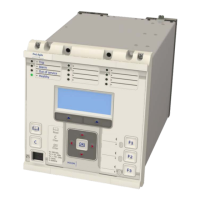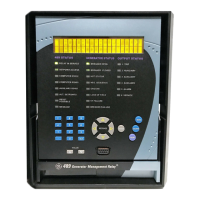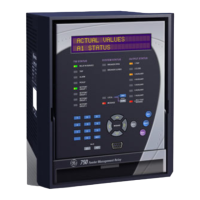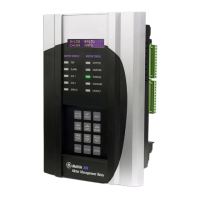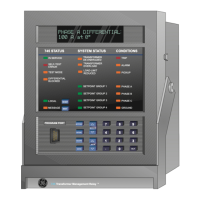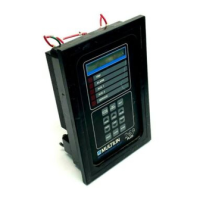Ia = 3 (Dir. I Fwd)Ð-θ Line
Phases B and C should retain their healthy pre-fault voltage, and no current. The duration of injection should be
set to 100 ms longer than the Aid. 1 Delta Dly, Aid. 2 Delta Dly time setting.
11.2 OPERATION AND CONTACT ASSIGNMENT
You should inject a forward fault with the intention of causing a scheme trip. For a Permissive scheme, the Signal
Receive opto-input needs to be energized. This is done by applying a continuous DC voltage onto the required
opto-input, either from the test set, or station battery.
For a Blocking scheme, the opto-input should remain de-energised.
11.2.1 PHASE A
1. Prepare a dynamic A-phase-to-neutral fault, as detailed above.
2. Set a timer to start when the fault injection is applied and to stop when the trip occurs.
3. To verify correct output contact mapping use the trip contacts that would be expected to trip the circuit
breaker(s) (Any Trip for 3-pole tripping, Trip A for single pole tripping).
4. For two breaker applications, stop the timer when CB1 and CB2 trip contacts have both closed. Monitor by
connecting the contacts in series to stop the timer if necessary.
5. Record the phase A trip time.
6. Switch OFF the AC supply and reset the alarms.
11.2.2
PHASE B
1. Reconfigure to test a B phase fault.
2. Repeat the test, this time ensuring that the breaker trip contacts relative to B phase operation close
correctly.
3. Record the phase B trip time.
4. Switch OFF the AC supply and reset the alarms.
11.2.3
PHASE C
1. Reconfigure to test a C phase fault.
2. Repeat the test, this time ensuring that the breaker trip contacts relative to C phase operation close
correctly.
3. Record the phase C trip time.
4. Switch OFF the AC supply and reset the alarms.
The average of the recorded operating times for the three phases should typically be less than 20 ms for 50 Hz,
and less than 16.7 ms for 60 Hz when set for instantaneous operation.
Note:
Where a non-zero time delay is set in the DISTANCE menu column, the expected operating time is typically within +/- 5% of
the delay setting plus the “instantaneous” delay.
Chapter 24 - Commissioning Instructions P446SV
642 P446SV-TM-EN-1
